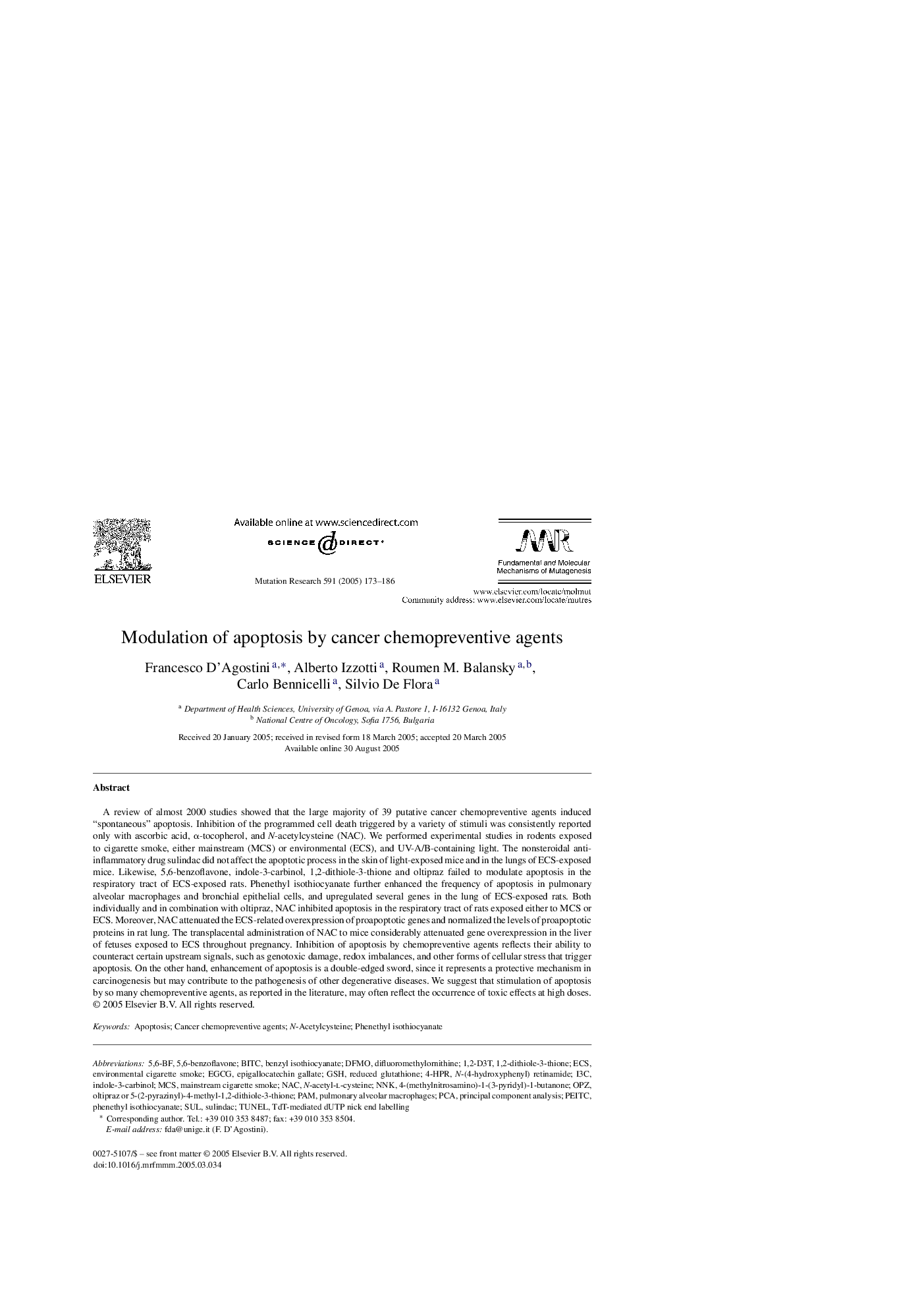| کد مقاله | کد نشریه | سال انتشار | مقاله انگلیسی | نسخه تمام متن |
|---|---|---|---|---|
| 9908970 | 1548427 | 2005 | 14 صفحه PDF | دانلود رایگان |
عنوان انگلیسی مقاله ISI
Modulation of apoptosis by cancer chemopreventive agents
دانلود مقاله + سفارش ترجمه
دانلود مقاله ISI انگلیسی
رایگان برای ایرانیان
کلمات کلیدی
NNKOPZDifluoromethylornithine1,2-Dithiole-3-thioneN-(4-hydroxyphenyl) retinamideBITCDFMOi3CN-acetyl-l-cysteineMCsEGCGNACGSH4-HPR - 4 HPR4-(methylnitrosamino)-1-(3-pyridyl)-1-butanone - 4- (methylnitrosamino) -1- (3-pyridyl) -1-butanone5,6-benzoflavone - 5،6-بنزوفلاونECs - EC هاIndole-3-carbinol - Indole-3-Carbinolepigallocatechin gallate - اپی گالوستاچین گالاتBenzyl isothiocyanate - بنزیل ایزوتیوسیاناتMainstream cigarette smoke - دود سیگار اصلیEnvironmental cigarette smoke - دود سیگار محیط زیستreduced glutathione - کاهش گلوتاتیون
موضوعات مرتبط
علوم زیستی و بیوفناوری
بیوشیمی، ژنتیک و زیست شناسی مولکولی
تحقیقات سرطان
پیش نمایش صفحه اول مقاله

چکیده انگلیسی
A review of almost 2000 studies showed that the large majority of 39 putative cancer chemopreventive agents induced “spontaneous” apoptosis. Inhibition of the programmed cell death triggered by a variety of stimuli was consistently reported only with ascorbic acid, α-tocopherol, and N-acetylcysteine (NAC). We performed experimental studies in rodents exposed to cigarette smoke, either mainstream (MCS) or environmental (ECS), and UV-A/B-containing light. The nonsteroidal anti-inflammatory drug sulindac did not affect the apoptotic process in the skin of light-exposed mice and in the lungs of ECS-exposed mice. Likewise, 5,6-benzoflavone, indole-3-carbinol, 1,2-dithiole-3-thione and oltipraz failed to modulate apoptosis in the respiratory tract of ECS-exposed rats. Phenethyl isothiocyanate further enhanced the frequency of apoptosis in pulmonary alveolar macrophages and bronchial epithelial cells, and upregulated several genes in the lung of ECS-exposed rats. Both individually and in combination with oltipraz, NAC inhibited apoptosis in the respiratory tract of rats exposed either to MCS or ECS. Moreover, NAC attenuated the ECS-related overexpression of proapoptotic genes and normalized the levels of proapoptotic proteins in rat lung. The transplacental administration of NAC to mice considerably attenuated gene overexpression in the liver of fetuses exposed to ECS throughout pregnancy. Inhibition of apoptosis by chemopreventive agents reflects their ability to counteract certain upstream signals, such as genotoxic damage, redox imbalances, and other forms of cellular stress that trigger apoptosis. On the other hand, enhancement of apoptosis is a double-edged sword, since it represents a protective mechanism in carcinogenesis but may contribute to the pathogenesis of other degenerative diseases. We suggest that stimulation of apoptosis by so many chemopreventive agents, as reported in the literature, may often reflect the occurrence of toxic effects at high doses.
ناشر
Database: Elsevier - ScienceDirect (ساینس دایرکت)
Journal: Mutation Research/Fundamental and Molecular Mechanisms of Mutagenesis - Volume 591, Issues 1â2, 11 December 2005, Pages 173-186
Journal: Mutation Research/Fundamental and Molecular Mechanisms of Mutagenesis - Volume 591, Issues 1â2, 11 December 2005, Pages 173-186
نویسندگان
Francesco D'Agostini, Alberto Izzotti, Roumen M. Balansky, Carlo Bennicelli, Silvio De Flora,